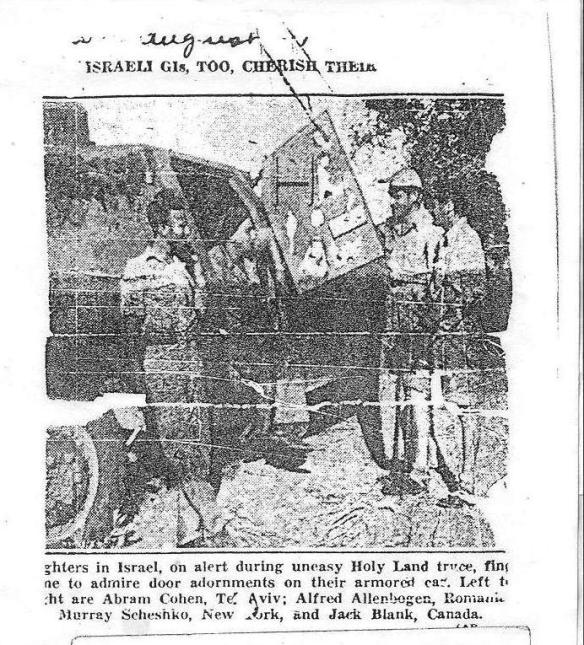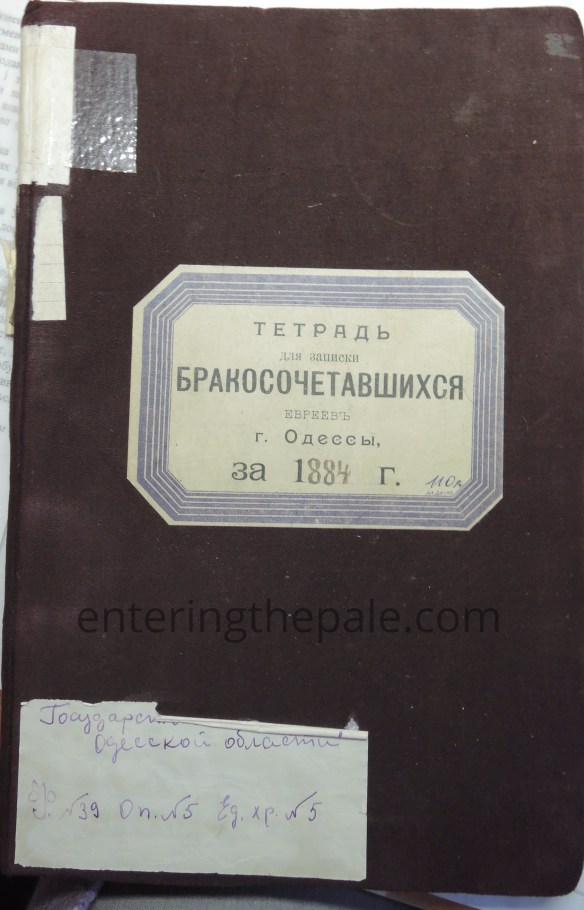Some time back, I wrote about my father-in-law’s U.S. military history. He was part of a heroic team in WWII. His father Isidore, who had served in both Russian and American militaries, must have been very proud of him. At the end of that post, I mentioned that before Murray settled down, got married, and became a business executive, he made one detour.
I mentioned that Murray experienced anti-Semitism while stationed in England. He was deeply affected by what happened there. At the end of the war, the stories of the death camps and murders of Jews at the hands of the Nazis must have also affected him a great deal.
On 14 May 1948, David Ben-Gurion declared the establishment of the State of Israel–and this time period found Murray in Israel, as an Israeli soldier. He served with a man who became his best friend and eventually his brother-in-law, Jack Blanc. Jack was an older Canadian soldier who was married with one child (at that time).
Although the quality is not the best, here is an AP photo that was published on 16 August 1948 in newspapers all over the United States of Murray and Jack in Israel (Jack’s name is misspelled). As the caption indicates, Murray is second from the right and Jack on the right..
What a lighthearted photo and caption (pin-up photos?) for such a serious mission they were on.
Here is the full page; check out the bottom left:
Murray was always very proud of his service for Israel, but it did take a toll on his life as he wasn’t able to pursue the higher education he so desperately wanted (I think I have mentioned before he wanted to be a lawyer). He was a soldier in Israel when his peers back in the U.S. were going to college and professional school.
After Israel, Murray came back to New York where Jack Blanc introduced him to a pretty art student from Canada named Diana Shulman. Diana was Jack’s wife’s younger sister. Murray and Diana eventually married and had first the gardener and then his sister. Here is Murray with Diana and the gardener.
The gardener wasn’t yet gardening at that point, but I imagine he was pretty active and kept his parents on the go.















 Since the story was that Isidore didn’t know his birthday, it’s wonderful to see that there really was a record of his birth and those of his siblings. January 26 will always be the gardener’s grandfather’s birthday to me from now on.
Since the story was that Isidore didn’t know his birthday, it’s wonderful to see that there really was a record of his birth and those of his siblings. January 26 will always be the gardener’s grandfather’s birthday to me from now on.